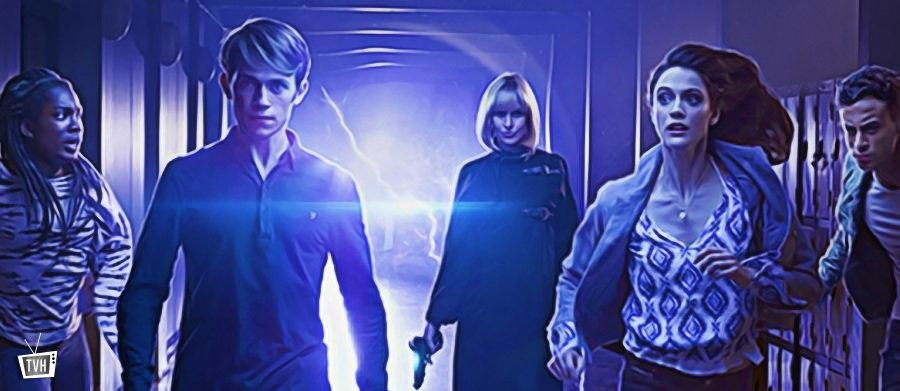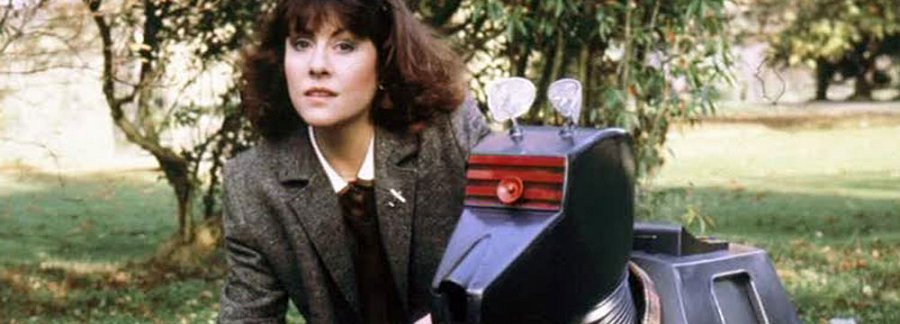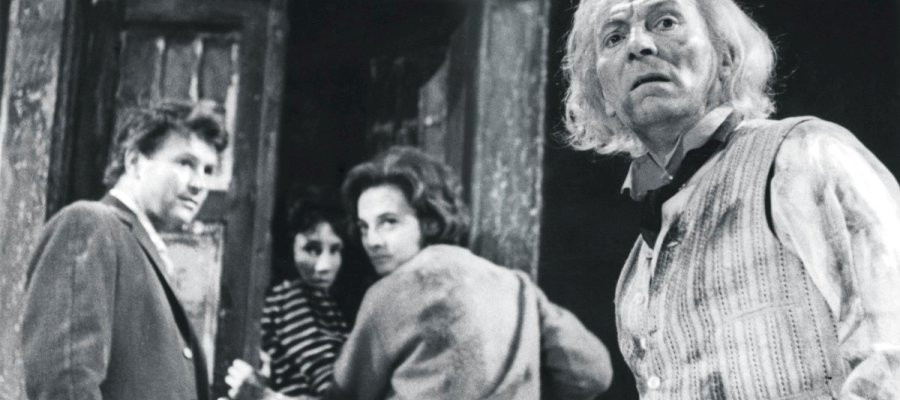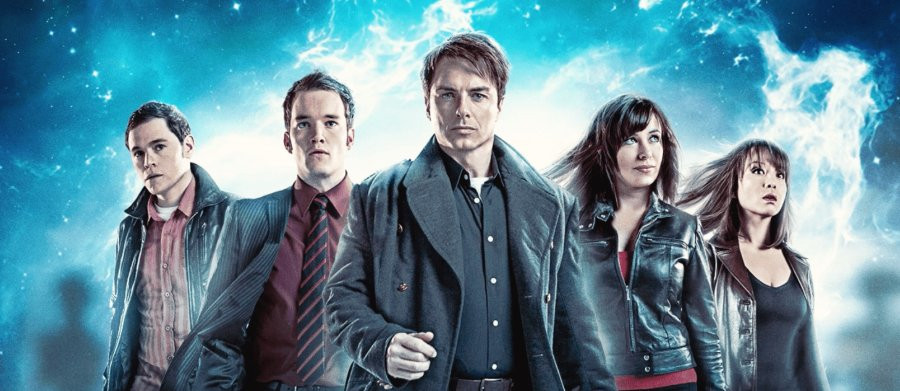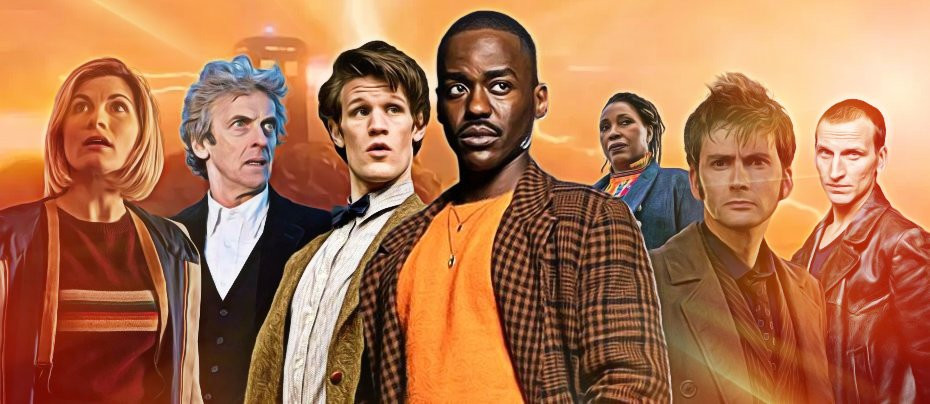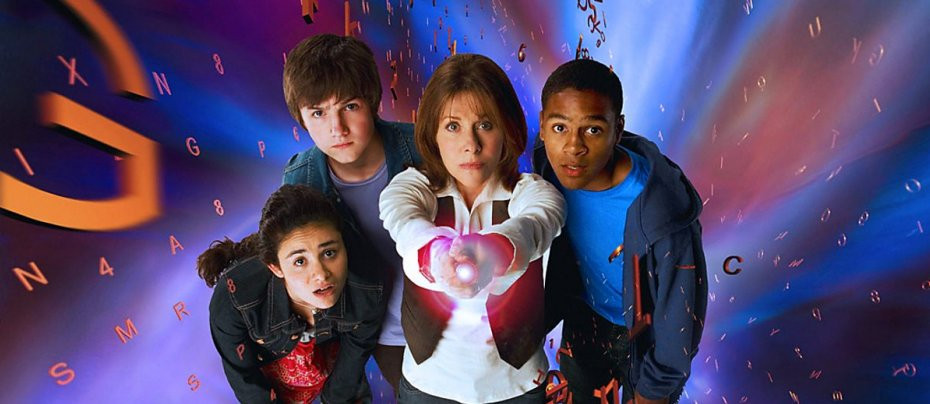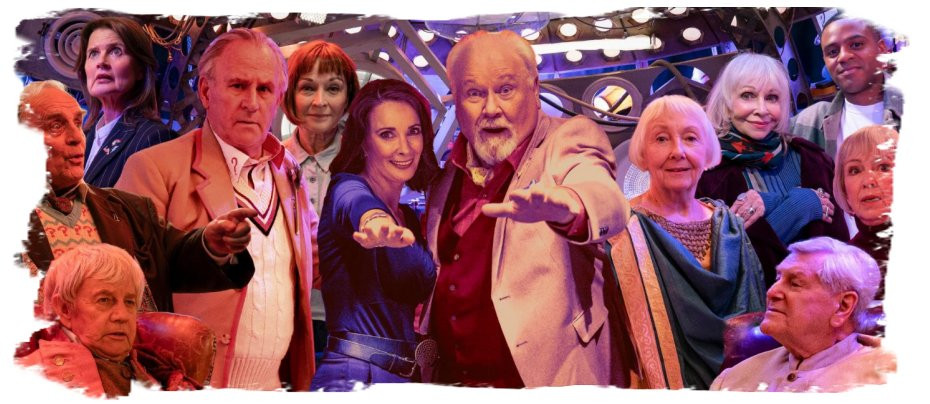The Caves of Androzani
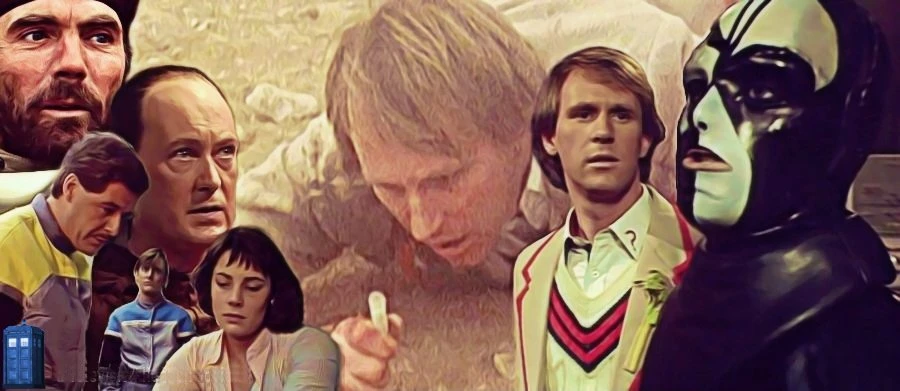
Peter Davison never had an easy time as the lead in Doctor Who. Taking over from the beloved and long-serving Tom Baker, he had to make his mark in a television landscape that was changing rapidly and making the BBC's long-running series look decidedly long in the tooth. In 1984, on his third season and the series' twenty-first, Doctor Who had moved past the celebratory spike of its twentieth anniversary and into a difficult period of transition. Davison had reportedly been advised by Second Doctor Patrick Troughton that three years was a sensible run for a Doctor Who, and Davison followed suit.
Unusually, series producer John Nathan-Turner decided that, unlike most such handovers, the season wouldn't end with the farewell story for the current Doctor but with the first story for his successor. As such, Davison's final story was the penultimate serial of the season, airing in four episodes over two weeks. This could easily have robbed the story of much of its impact, leaving it overshadowed by the story after it, but The Caves of Androzani dominates the season, simply by being an order of magnitude better than anything else around it.
The serial is the result of one of those perfect storms of production. Robert Holmes, a legendary writer of Doctor Who stories who had begun on the series in Troughton's era, before making a name for himself as a frequent writer in Pertwee's and script editor on Tom Baker's, was approached first to write the twentieth-anniversary story, and when that went awry, offered Davison's exit as a thank you and apology. Script editor Eric Saward gave Holmes one instruction – "Kill the Doctor," - and left Holmes to it. His script, originally under the less lurid title Chain Reaction, is a gritty and uncompromising story that puts the Doctor through the wringer. Even so, Holmes wrote much of it with his more familiar Doctor Tom Baker in mind, and ultimately presents a fairly generic Doctor.
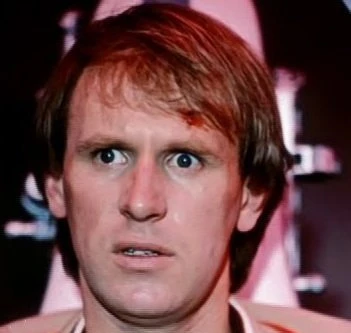
Yet this works perfectly for Davison, one of the most talented actors to take on the role, who is more than capable of putting his own stamp on the character with minimal script direction. The recipe is completed by an excellent supporting cast and impressive direction by Graeme Harper, on his first directorial assignment for the series. Harper's skill behind the camera adds pace to the story and interest to slower sequences and disguises the production shortcomings. The sets and costumes are largely as ridiculous and over-lit as in most of this era, but this serial gets away with it in a way that, for a particularly garish example, season opener Warriors of the Deep really doesn't.
The Caves of Androzani is a heart-racing thriller in a period where Doctor Who was offering comfortable, unthreatening sci-fi shenanigans. The series has always straddled a short spectrum of family show to outright kids' show, but has, on numerous occasions, courted controversy with some decidedly adult approaches to its material. The Caves of Androzani is a brief moment when the series was arguably not suitable for children at all. A story of gun-running and drug smuggling in a war zone, it's a callous, miserable affair with barely a single pleasant or reassuring moment. The series would crash right down into children's pantomime nonsense in the very next serial, but for a fortnight, it was an adult sci-fi drama that had more in common with its stablemate Blake's 7 than most of Doctor Who.
Davison's Fifth Doctor has received some criticism over the years for being a more vulnerable, weaker incarnation, sometimes buffeted along by events rather than taking control of them. This was, in part, a deliberate decision to contrast him with the domineering and unstoppable Fourth Doctor played by Tom Baker, and even he'd been knocked down a peg or two in his sombre final season. Davison's world-weary performance carried much of this, making his Doctor one who would rather just see the sights of the universe and have a nice quiet afternoon, rather than have to step in and save a planet from peril. The Caves of Androzani is the ultimate example of this, with the Doctor arriving in a story that started long before he got there, swept along by events but acting as a catalyst for the whole damned thing to come crashing down around him. He turns up in a nasty little war on the brink of catastrophe and pushes things over the edge, and his story is simply one of survival. All he wants to do is get himself and his companion back to the TARDIS so they can escape this vicious world they've landed on.
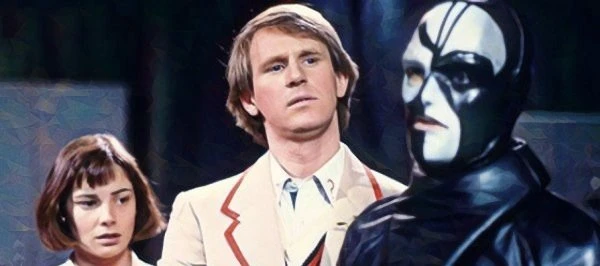
Davison's uncompromising, often facetious version of the Doctor is perfect for this story. However Holmes wrote it, it's impossible to see his predecessor working the same way. Tom Baker would deliver lines like "Perhaps he just liked my face," with a triumphant smile and a demand to be centre of the scene, while with Davison you just know he's overstepped the mark and is going to receive a beating for his lip. Equally, this kind of role wouldn't work so well with his successor, Colin Baker. He would similarly be side-lined in scripts by Saward (who had a particularly action-oriented, brutal view of the series), but while this sometimes worked (Revelation of the Daleks being a perfect example) there's the feeling that the Sixth Doctor is being wasted by not revelling in events. The Fifth Doctor, more of a team player in his own series, can carry the show without dominating it, and so allows this kind of story in a way the Bakers can't.
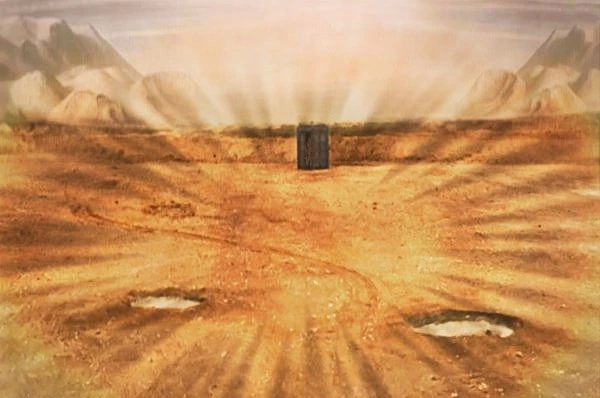
The story opens with the Doctor and Peri arriving on a grim desert planet. Peri, played by Nicola Bryant, is the Doctor's newest companion, having joined him in the previous story Planet of Fire. A young American (allegedly) student, she's wide-eyed and enthusiastic about setting foot on another world. (Tie in media has set umpteen extra stories in the gap between these serials, but it's clear here that the two, although having formed quite a rapport, have not been travelling together for long.) It's not long at all before they are arrested and drawn into the nightmarish situation that imperils the whole system. The planet they stand on is Androzani Minor, the barely habitable sister world of the heavily populated and industrialised Androzani Major, both orbiting the star Sirius (easily visible in the night sky and just down the road at under nine light years away).
It's some time in the future – could be a hundred years, could be a million. It doesn't matter. What matters is that this civilisation is desperate and corrupt, its economy reliant on a miracle drug called Spectrox. The substance is able to hugely extend the human lifespan when refined, but in its raw form, a web-like fungus, it causes a fatal poisoning called Spectrox toxaemia. Naturally, Peri falls right into some, and the Doctor exposes himself to it helping her out. It's a simple, careless, entirely believable mistake that anyone in a foreign environment would make, and it dooms the Doctor from the moment it happens. Once they've inadvisably gone into the fungus-filled caves, the Doctor and Peri are arrested on suspicion of gun-running to the notorious terrorist Sharaz Jek.
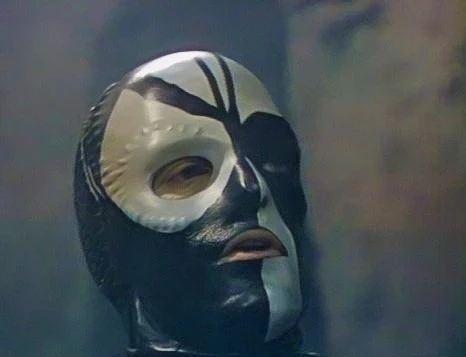
From this point, the two travellers are shunted back and forth between Major and Minor and the custody of the military, gunrunners and Jek himself, each with their own paranoid reasons for not trusting them. In the Sirius system it seems that everyone is out for themselves, and no one can believe that the Doctor and Peri – surely the least likely pair of arms dealers in history – can be innocent wanderers. The serial is populated by a series of frankly nasty pieces of work. Jek is probably the most sympathetic, and he's a sociopath. Jek was once a respected man on Major but was horribly mutilated in a mud burst – a volcano of boiling earth that occurs on Minor – and left to die by his partner Morgus. He now squats in the caves, surrounded by androids of his own manufacture ("Because androids do not see as we see,") hiding his face and body beneath a leather suit and mask. Yes, it's a space age riff on The Phantom of the Opera, complete with an obsessive pursuit of the prettiest girl in the story (this sort of thing will happen to Peri a lot in the following seasons, it's quite troubling). Jek is played with tremendous skill and pathos by Christopher Gable, a former dancer by then best known for his role in The Boyfriend. He's so brilliant in the part that it makes you pleased that some of the bigger names the producers had tried to get for the role, including John Hurt, Tim Curry and David Bowie, all declined.
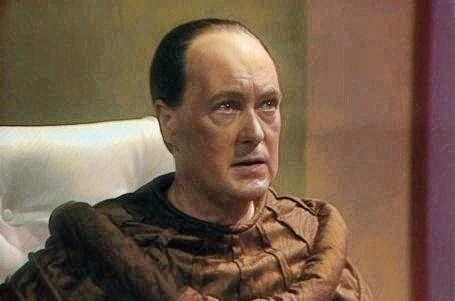
As a retelling of the Phantom story, it's perhaps the most like The Phantom of the Paradise, Brian de Palma's surreal rock musical released ten years earlier. Both feature a disfigured, somewhat antagonistic and somewhat sympathetic figure destroyed by one man's rapacious greed. In Androzani that man is Morgus, the Chair of the Sirius Conglomerate and the most powerful civilian in the system. While Jek controls the supply of Spectrox from his caves, Morgus has a monopoly on mining and industry, the ear of the President (David Neal) and a callous disregard for human life in the way of his personal profits. He is secretly employing gun runners who sell weaponry to Jek, in return for the Spectrox which he can sell on the black market, while simultaneously pushing the direction of the war with Jek. Keeping both sides fighting and getting richer all the time, Morgus is a truly despicable individual, played with aplomb by John Normington. Known for endless roles as bank managers and civil servants in series such as Crown Court and Yes, Minister, Normington's officious style makes Morgus all the more loathsome. None of it's personal, it's all just business. He also has a wonderful habit of making melodramatic asides to the camera, which arose from a misunderstood direction but somehow worked so well that Harper went with it. It adds a distinctly theatrical bent to Morgus's scenes.
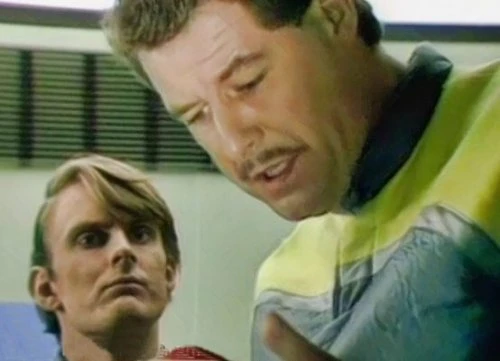
Holmes had a long history of attacking corporations and capitalism in his work – you'd think he was an old-fashioned socialist, if he hadn't written an entire Doctor Who serial (1977's The Sun Makers) as a protest against his tax bill. His Doctor Who villains were often heartless people working for faceless companies.
In the 1980s, when ever-expanding corporations were a focus and a fear, and the government seemed to care more about maintaining profitability than people's livelihoods, this was all the more potent. This was only two years after the Falklands War, though, so the military and warfare was also a hot topic. Watching it now, though, after years of the so-called War on Terror, this story seems prescient, with its focus on terrorism and one man's crusade and his man hunt propelling a war. The military personnel are some of the more likeable in the story, coming across as patriotic men in a terrible situation, but even they are willing to sacrifice men's lives to save face. Martin Cochrane (Sutherland's Law) plays the overwhelmed General Chellak with some sympathy, while Robert Glenister (Hustle, MI-5) plays his right-hand man Salateen, and his android duplicate. Glenister (who around the same time had played Peter Davison's brother in the sitcom Sink or Swim, which must have been odd for viewers of this serial) puts in an excellent performance as the clipped officer and his copy, giving them subtly different performances.
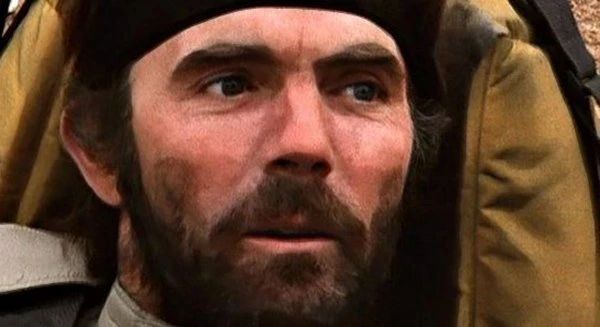
The worst of the bunch (aside from Morgus) are the gun runners, led by Stotz, played by Maurice Roëves. A fairly major star for roles in The Nightmare Man, Who Dares Wins and Danger UXB, Roëves was flown over from the States at some considerable cost. He makes Stotz a thoroughly horrible creep, a backstabbing, murderous thug who doesn't care about anyone but himself. In the serial's nastiest moment, he tries to force feed his partner Krelper (Roy Holder) a cyanide pill – it's really not suitable for kids! Perhaps the only halfway decent person in the supporting cast is Trau Timmin (Barbara Kinghorn), Morgus's aide and usurper, and she's a disloyal liar who uses the situation to her own gain.
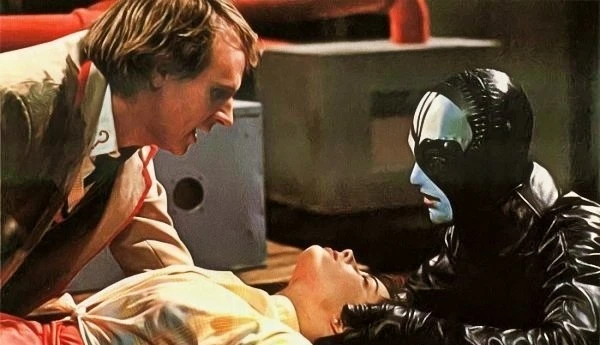
Among all these unpleasant individuals, the thoroughly decent Fifth Doctor and his naïve companion have no chance. They are thrown from one life-threatening situation to another, and the world of Androzani is so cynical and brutal that you can genuinely believe that any of these moments could be their last. The story is so ruthless that viewers could entirely accept that Peri could be killed off almost as soon as she joined the series (something that had happened to companions before, but not since the William Hartnell years).
Armed with the foreknowledge that Davison was leaving the programme (something that, while not headline news as such, was reported in the press), any one of the episode cliff-hanger endings could have been the one that killed him. Well, except maybe the end to episode two, with its woefully unconvincing magma creature, an ill-considered addition to a serial that has more than enough human villains without need of a monster.
Bryant is excellent as Peri, increasingly sickened by both the Spectrox and what she sees around her, but it's Davison who really impresses. While he has only fleeting opportunities for heroic moments early in the serial, in the second half he is a desperate force, fighting to get back to Peri, find the hidden antidote to the poisoning and save the life of the girl he has unwittingly brought into this horrific situation. There's a clever moment at the end of episode three, in which the Doctor is about to crash a commandeered spacecraft on Minor in his attempt to reach Peri. As he resurfaces from unconsciousness, there's an odd optical effect in his field of vision. An episode later, this effect is reused as the beginning of the regeneration, hinting that the Doctor was fighting off his regeneration all through that last episode so he could reach Peri.
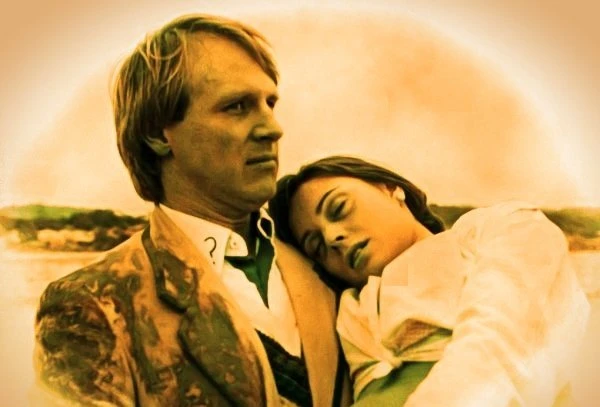
The final episode is, frankly, a bloodbath, or would be if they could get away with showing any blood. The Doctor's presence has catalysed the collapse of Morgus and Jek's respective plots and brought the war to its violent conclusion. Every single male character in this story dies – including the Doctor! - either seen to be killed or assumed so offscreen. Only Peri and Timmin survive. The Doctor, in the last moments before Androzani Minor tears itself apart in a final cataclysmic mud-burst, rescues Peri and gets her back to the TARDIS, with just enough of the Spectrox antidote for one person. Feeding it to her, the Doctor collapses, with a plaintive question of "Is this death?" Peri recovers implausibly quickly, but time is running out, and the Doctor drifts in and out of lucidness as he lays dying on the floor of his ship. It's a gripping final performance, undercut only slightly by Peri leaning over the prone Doctor, giving the viewers a very distracting look down her top. Davison has bemoaned for years that in his final moments on the series he was upstaged by Nicola Bryant's cleavage.
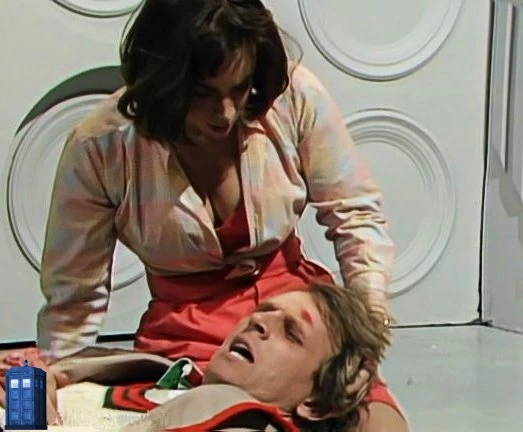
The Doctor wonders whether he'll regenerate but seems unsure – "Feels different this time..." adding weight to his sacrifice. For a moment, it looks like the Spectrox has really finished him off, that he's held back for too long and that he really will die here. Then, we see and hear his former companions (all returning for a special shoot) encouraging him to pull through, before his arch nemesis the Master (Anthony Ainley) appears, ordering him to die.
As these hallucinations spiral around him, video and audio effects (inspired by the crescendo of the Beatles' song "A Day in the Life") reach a towering climax – and in a burst of light, the Doctor sits up with a brand-new face. Colin Baker gets to start a new tradition of actually giving an introductory line or two before the end of the episode (something that's par for the course in modern Doctor Who but unseen on the series before). The season's not even over and a new era has started, while we're still reeling from Davison's incredible final story and arguably the best regeneration in the programme's history.
Davison later said that, had he had scripts and direction like on The Caves of Androzani throughout his tenure, he would surely have stayed on for another year. The Caves of Androzani has gone on to secure top five spots in multiple fan polls in the years since it was first broadcast. Holmes would only return to Doctor Who once more, failing to complete his work on 1986's The Trial of a Time Lord before he died. Harper returned to direct Revelation of the Daleks in 1985, and became the only director from the classic series to work on the revived programme, beginning with Rise of the Cybermen in 2006. Bryant continued with Colin Baker through to the twenty-third season in 1986 and has returned along both her Doctors in Big Finish audio plays since 1999.
Peter Davison went on to continue his long and distinguished acting career, starring in A Very Peculiar Practice and Campion in the late 1980s and returning to the revived All Creatures Great and Small until its end in 1990. After a brief career lull in the 1990s, he returned to comedy with At Home with the Braithwaites and The Last Detective in the early 21st century, with notable roles in Fear, Stress and Anger and The Mrs. Bradley Mysteries around the same time. He continues to appear in television roles regularly, but Doctor Who will forever be one of the roles he is best remembered for.
Review by Daniel Tessier


